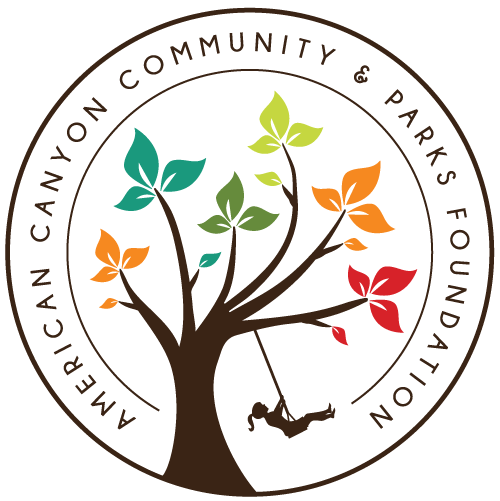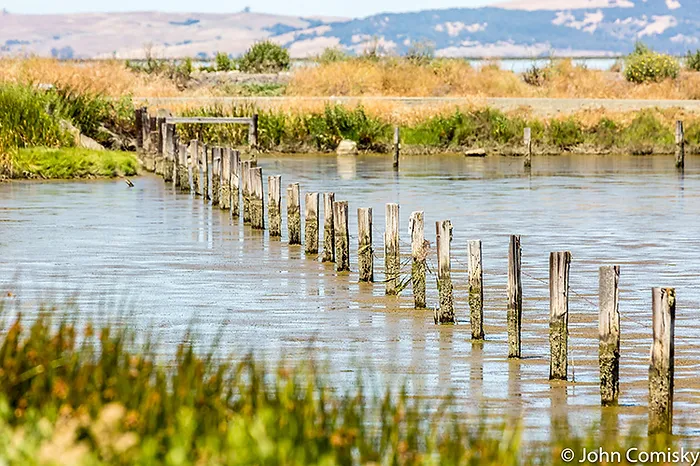We are so lucky to have guest blogger, John Comisky, join us! John is Vice President at the Wildlife Rescue Center of Napa County. This week John writes about his experience with American Canyon’s Wetlands.
I walk the wetlands. I listen to their songs. I photograph the pictures they paint. And I often wonder about the lives that are lived there, and the plot behind the show.
So this is intended to be the beginning of a series of blogs about all that. It intends to live there. With it, I am hoping for two outcomes.
The first one, if you are also a wetlands walker, aspires to enrich them for you, to deepen your footprints on the trails, to sharpen your eyes at the sense of movement. The second, if you are not presently among that class, hopes to hook the hand of your curiosity and lead you there, if only for a peak.
Predictably I am starting with the wetlands themselves. They are, true to their naming – well – wet. All wetlands are formed in partnership with a recurring source of water. In the case of the American Canyons Wetlands, that is the San Pablo Bay and the Napa River.
Water is the blood that flows through their veins. Their soils are saturated with it – literally. Yet wetlands are much more than water and earth and their marriage in mud. Traditionally considered to be wasted land (from the perspective of human progress) and potentially harmful breeding areas of disease, wetlands long endured a bad rap, causing them to be abused, operated on, and run out of town.
The American Canyon Wetlands, for instance, were greatly diminished for decades, filled in, used as salt ponds, became the end of the road for lots of stuff. They were part of the larger ill-informed genocide.
But times change, the body of understanding uncovers hidden truths and relationships, wisdom turns corners. Wetlands are now understood to be one of the most productive ecosystems in the world. They can rub shoulders with rain forests and coral reefs, and have a similarly impressive resume. The list is long but in short they provide habitat and refuge for fish and wildlife, cleanse water, produce oxygen, moderate global warming and participate in flood control and erosion reduction.
There’s more – you can also think of them as outdoor kitchens, where a stew of biodiversity is always simmering on the burner. They are one of the anchors of food chains, places where the links begin to link.
The food web in the wetlands starts with the plants that learn to thrive in their unusual environment. It’s a tight club. Most others fear to tread there. When the leaves and stems of the in crowd die and break down in the water, the result is small particles of organic material called detritus. This builds into an enriched soup that’s the milk and cookies for small aquatic insects, shellfish and small fish. That, in turn rings the dinner bell for larger predatory fish, reptiles, amphibians, birds and mammals.
Word gets around.
So, although only about 5% of the nation’s total land area is wetlands, almost 35% of the nation’s rare or endangered plants and animals are found there and many hundreds of species of vertebrates (in the United States) spend at least part of their life in wetland habitats.
That used to be the case here, was lost for a long while, and now has returned. After many years of phenomenal effort the wetlands in American Canyon have been restored. The engines are running again. The wildlife has returned. Better yet, a system of well-maintained trails brings them within easy reach.
Now, for the price of a few calories, there is an orchestra seat with your name on it. The curtain never comes down.
Which brings me back to the idea of a series and why (in case you wondered) someone connected to wildlife is doing it. The notion is to explore the American Canyon Wetlands in each of three wildlife layers: water, earth and air (sorry, fire just doesn’t show up). And to accompany them with a liberal garnish of photos, and treasure maps. The latter applies if you find wildlife sightings precious, value increasing your chances of scoring them and then knowing a bit more about what you are seeing when you do.
Want to go for a virtual walk… towards a real one?
– John

